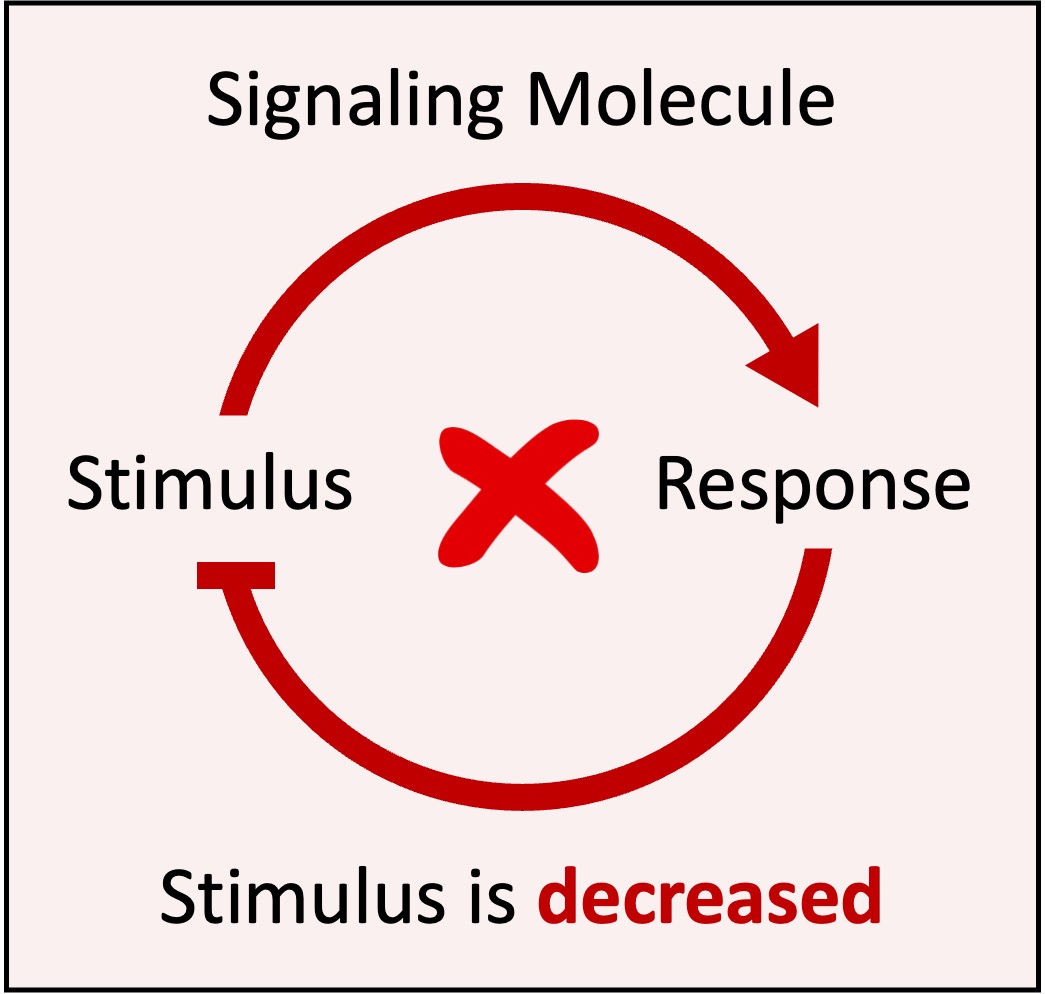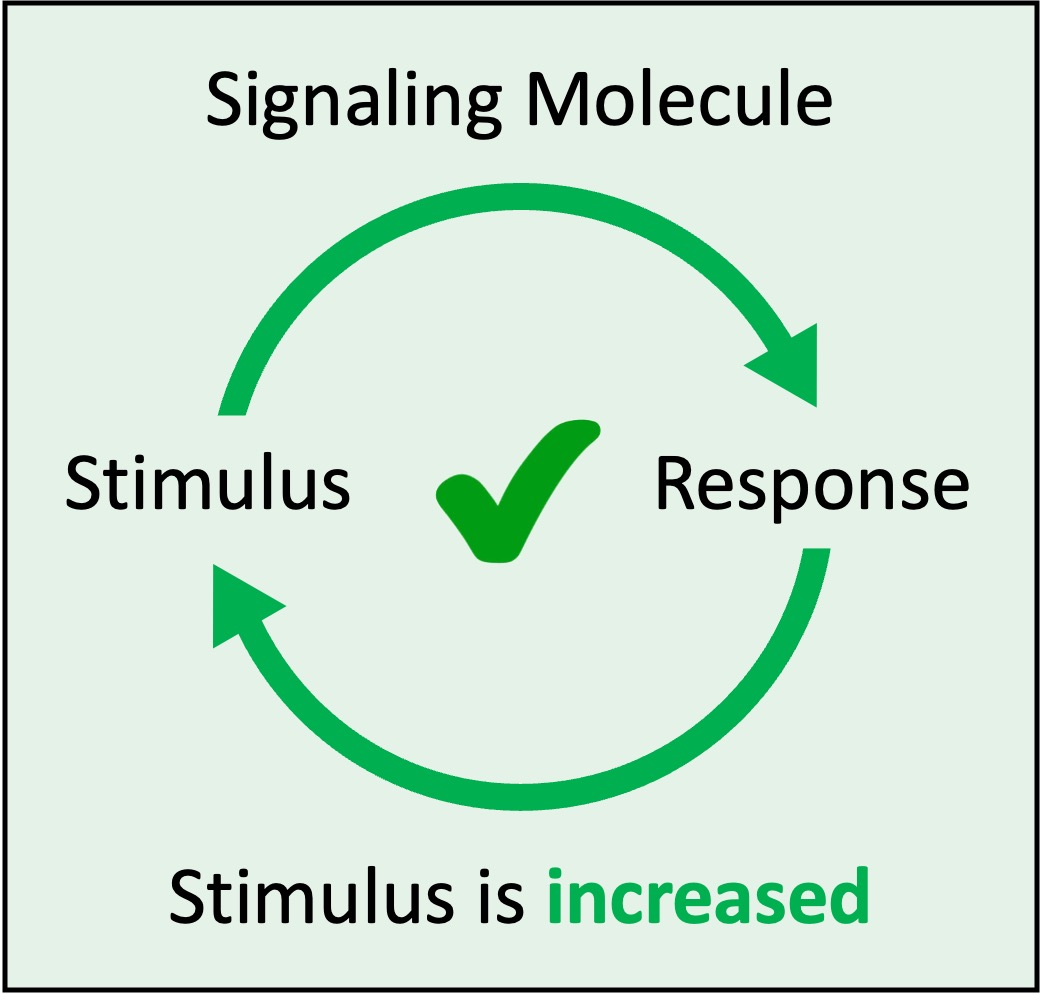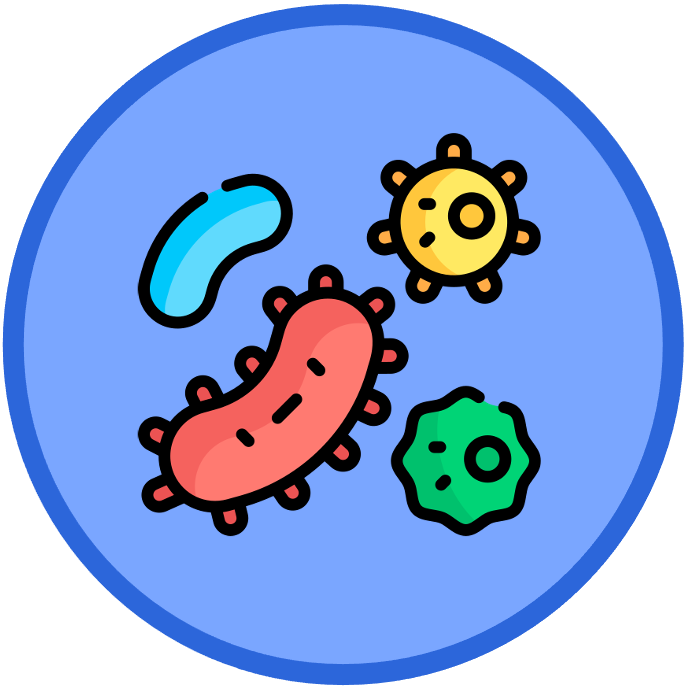

Feedback Loops
Cell signalling pathways are commonly regulated by two distinct feedback mechanisms – negative and positive feedback loops
-
Examples of intercellular communication within organisms include autocrine, paracrine and endocrine signalling
-
Homeostatic processes are controlled by negative feedback loops and so these systems occur more commonly within the body
Negative Feedback
Negative feedback involves a response that is the reverse of the change detected (it functions to reduce the change)
-
A signalling molecule will induce a response that is the opposite of the initial stimulus – this promotes equilibrium
-
Examples of processes that utilise negative feedback loops include:
-
Thermoregulation – if body temperature changes, the hormone thyroxin induces changes to restore normal levels
-
Blood sugar regulation – insulin lowers blood glucose when levels are high ; glucagon raises blood glucose when levels are low
-
Osmoregulation – ADH is secreted to retain water when dehydrated and its release is inhibited when the body is hydrated
-

Positive Feedback
Positive feedback involves a response that reinforces the change detected (it functions to amplify the change)
-
A signalling molecule induces an effect that is the same as the initial stimulus – this promotes further change
-
Positive feedback loops will continue to amplify the initial stimulus until the signal is removed
-
Examples of processes that utilise positive feedback loops include:
-
Blood clotting – platelets release clotting factors which cause more platelets to aggregate at the site of injury
-
Cell division – The activation of cyclin-dependent kinases (CDKs) may trigger the production of more cyclins
-
Types of Feedback

Negative Feedback





